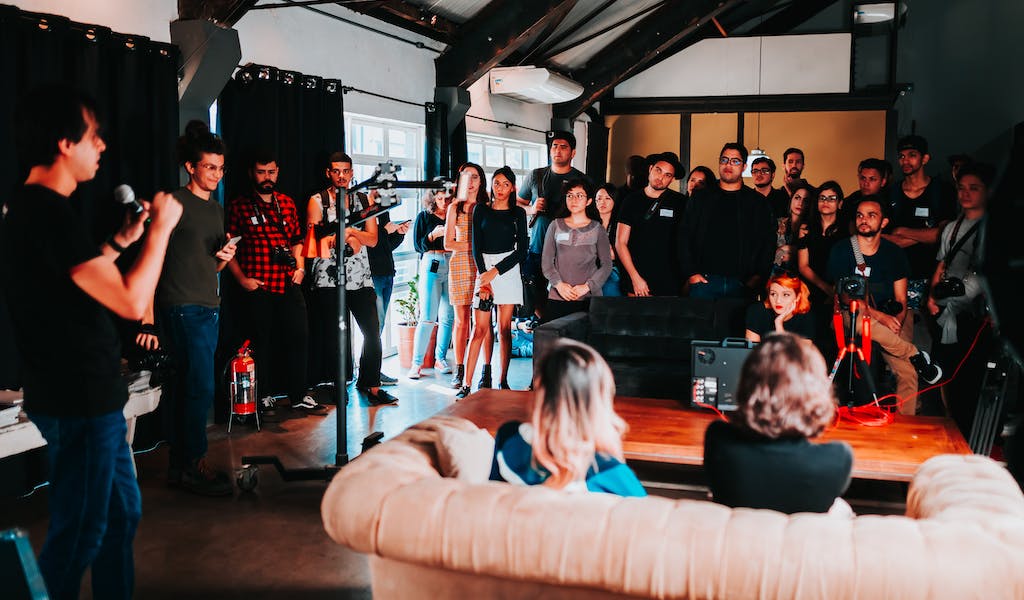Every trainer is familiar with warming up a crowd, and the same goes for conferences as well as organizational training meetings. In some respects, conferences are a bit easier as guests want to be there and want to hear the presentation. Trainings are probably harder in that many attendees are required to be present. However, both share the same trait – a passive crowd unwilling to engage unless given a reason to do so.
For a presenter, the big challenge is how to trigger audience involvement early. If it can be brought in right away, and the tempo maintained, audiences are more likely to listen, digest what they are being told or shown, and are more likely to react to it as well. Traditionally, the measure of success in this kind of effort has been the number of sales or feedback look audiences provide in terms of wanting to know more or connect better with the presenter’s cause. However, with today’s tools, there are even better ways now if they are implemented correctly.
Pre-Planning
The first step in any audience engagement is to know the audience ahead of time. This is usually possible either through the registration of respondents and key survey questions when they do so to identify interests. Alternatively, if people are required to attend, their profile has been gathered that helps identify why they are in the training and what they should be getting out of it. Both types of information are extremely important ahead of time because they can contribute significantly to crafting the audience engagement in the presentation. Never, ever engage an audience without already having performed this step. It’s a tremendous waste of energy and exposes the presenter to a high risk of audience engagement failure.
Typical audience identification should include:
- Group age
- Education
- Status in the organization or conference membership
- Career position, function, and role
- Industry interest
- Decision-maker, input influencer, or learning attendee
It also helps to know how much of the audience will be engaging in-person versus remote. There are key tools that can be used for both that enhance the presentation, depending on location.
Kick-off and Starting
A key attention-grabber involves making the audience feel valued right from the first minute. While the common approach is to distribute some kind of swag or treat, this is temporary and oftentimes distracting. Instead, the smarter approach is to provide some kind of compliment and identification of attendees and why they are selected to be at this conference or engagement. This appeals to the audience’s ego and pulls in their attention better for what comes next. Throughout the event this tempo needs to be maintained. It also sets the groundwork for bond-building between the speaker and audience within the next one to three minutes building up to the point of the session.
Content Relevancy
Be ready to switch to alternate content as the crowd is warming up. This can happen if it turns out the initial presentation is off-target, despite the pre-planning research. It’s far better to engage partially than completely fail doubling down on irrelevant material. A clear-cut sign the presentation is dying becomes evident when people are falling asleep or getting up and leaving for the bathroom.
Involve the Audience
Just about everyone has a mobile phone nowadays, so it’s the perfect tool to involve the audience and let them see how they interact with their peers. Multiple apps are now available for member engagement at event sessions. Attendees can use their phone to select anonymously, and they can see the results real-time on an Internet-connected screen. This is also really useful for the item above in terms of real-time attention to temperature measuring of the room.
Gamify the Experience
People like contests, and they definitely like winning. So, you can keep their attention locked by gamifying their involvement in a presentation. Again, using the phone and a related app, an audience could participate while listening, and a winner could be selected for a special prize. Make sure everyone sees the winner so that they are motivated to engage and win the next one. Offer a prize probably every hour, and you’re sure to keep most of the audience on the gaming aspect alone.
Allow for Feedback
Some of the best tips and advice on how to improve a product or service involves live feedback from the audience. If you’re in the software or digital tool business, users in a presentation provide direct, invaluable user experience thoughts that can lead to effective improvements. User experience is one of these most powerful and missed aspects of product or service development, and conferences or training are a great way to find out what to improve. So, give people a chance to talk and verbalize what’s not working, or even better.
Engagement is a two-way street, so always make sure to keep the audience involved. It’s a classic rule to follow for successful events.

















